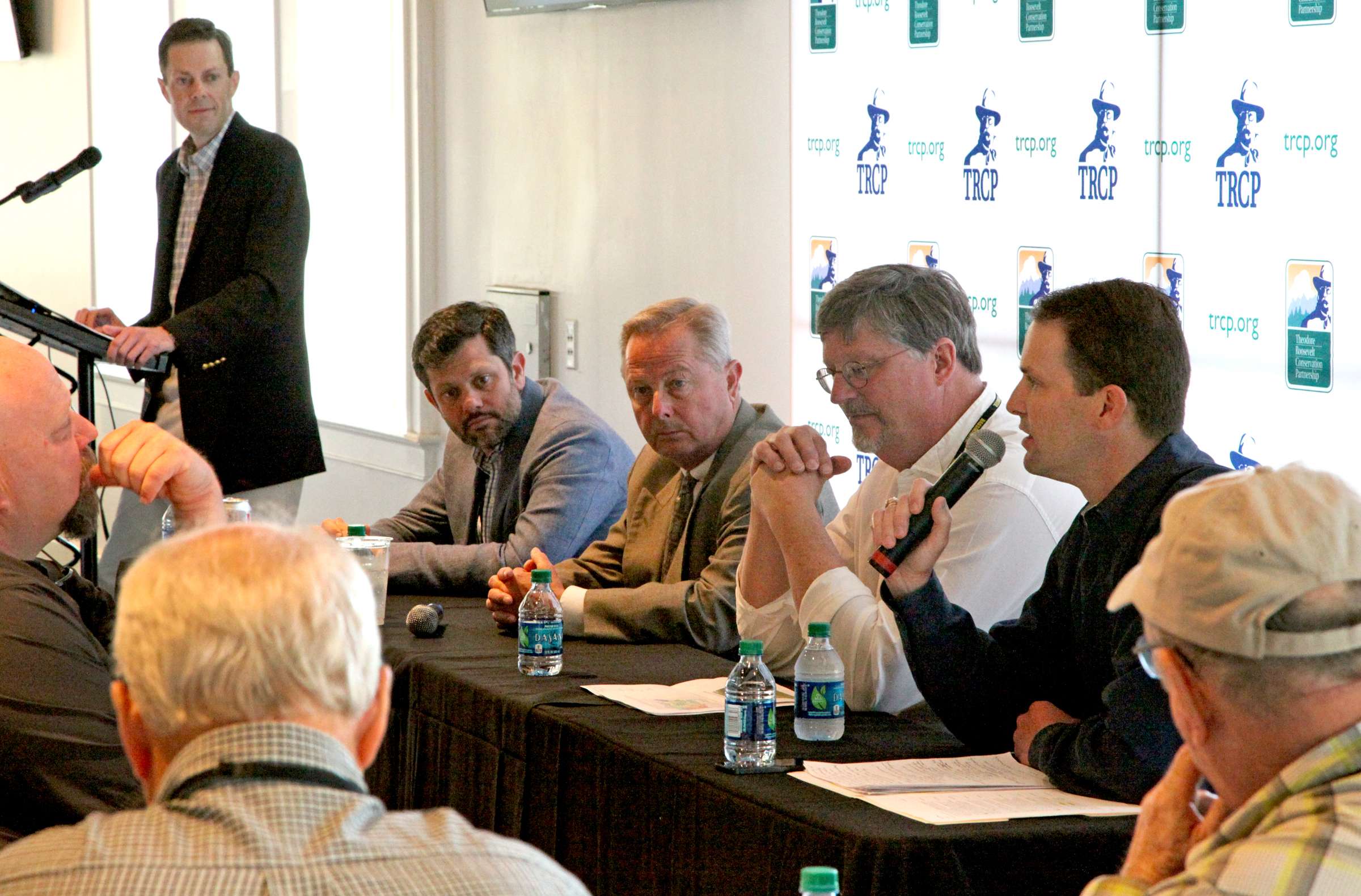
By Kelly Bostian
A sense of urgency accompanied visions of babbling brooks, shrinking reservoirs, big bass and crowded conference-room tables from rural co-ops to Congress, at a Saturday luncheon that focused on conservation issues during the GEICO Bassmaster Classic presented by DICK’S Sporting Goods.
To sustain, much less improve, the current state of the nation’s fishing opportunities there is an immediate need for direct and continuous angler involvement, coalition building and coordinated efforts on the ground and in governing bodies from city councils to Congress.
That was main message out of the Teddy Roosevelt Conservation Partnership (TRCP) media luncheon Saturday at Minute Maid Park in downtown Houston.
Setting a basic premise for a panel conversation, Geoff Mullins, chief operating and communications officer for the TRCP said, “The quality of time you have on the water is directly related to the quality of the water itself and the fisheries and the habitat.”
The panelists included, Bill Frazier, North Carolina B.A.S.S. Nation Conservation Director; Jeff Boxrucker, Reservoir Fisheries Habitat Partnership coordinator and executive director, Friends of Reservoirs Foundation; Craig Bonds, Inland Fisheries Division Director, Texas Parks and Wildlife Department; and Chris Adamo, former chief of staff of the White House Council on Environmental Quality.
“We all know it’s a new day in Washington D.C.,” Mullins said. “We know there is less emphasis on regulatory approaches and that makes it all the more important that there are voluntary and state-and-local partnerships that can use some federal resources to make things happen on the ground.”
Another version of the nation’s Farm Bill is sure to be passed in a couple of years as well, and that vehicle is a primary source of funding for water conservation efforts tied to private lands. The United States is 70 percent privately owned and 300 million of those acres are agriculture-based, Adamo said.
While all acknowledged a current polarized political climate, the panelists addressed trends that are longstanding and political strategies important to sportsmen and conservation that are age-old but in need of constant renewal focus and energy.
“We are coming to a paradigm shift that anglers have to recognize is critically important for fishing to continue as it is today,” Boxrucker said.
The nation’s reservoirs, mostly built in the 1950s and ‘60s, are aging to the point of needing a great deal of work and money to maintain fishing and recreational opportunities, he said.
He offered the example of the Bassmaster Classic venue, Lake Conroe, where a public-private partnership established a nursery and, over many years effort, has established 1,500 acres of water willow in a lake that once suffered for lack of shoreline habitat.
“We are kind of sitting on the edge of a cliff,” Boxrucker added for emphasis. “When we begin that decline it’s going to occur very rapidly.”
Hope exists in mutual recognition of the value of clean water and healthy habitat, Boxrucker said. He added the example of Wichita Falls, Texas, which is using public-private planning and funding to pull off a $55 million effort to restore Wichita Reservoir.
Economic estimates show that restoring the watershed will add another 20 percent to the area’s annual gross economic value, he said.
Still, within a single watershed community interests and agriculture interests and best-practice methods may vary greatly, Adamo said.
Large tables with many stakeholders gathered around them are the hope for coordinated efforts and partnerships that will hold enough weight to be politically meaningful, Adamo said.
“No one is going to succeed; no one state agency, no one federal government program no one conservation organization or agency gets to the level of conservation effort you need to see,” he said. “You’ve got to bring in agri-business, you’ve got to bring in food companies, you have got to bring in all the sportsmen’s groups. State agencies, whether its department of environmental quality, departments fish and wildlife, departments of agriculture, all have to be involved. This is a really complex problem.”
Frazier, a tournament bass fisherman and a water quality manager for High Point, N.C., attempted to simplify the picture with a Sesame Street reference.
“One of these things doesn’t fit with the others … a pristine babbling stream, a dog’s water dish, a tire rut and a manmade reservoir,” he said.
Obviously the babbling stream was the outlier, as it is least in need of help.
“In these manmade situations you’re going to have manage the situation, and it’s not going to be cheap, it’s not going to be easy and there is no one-size-fits-all answer,” he said.




